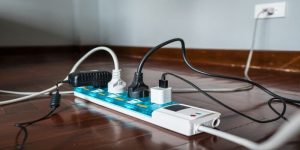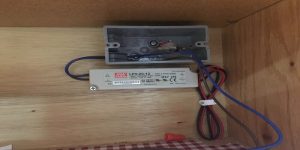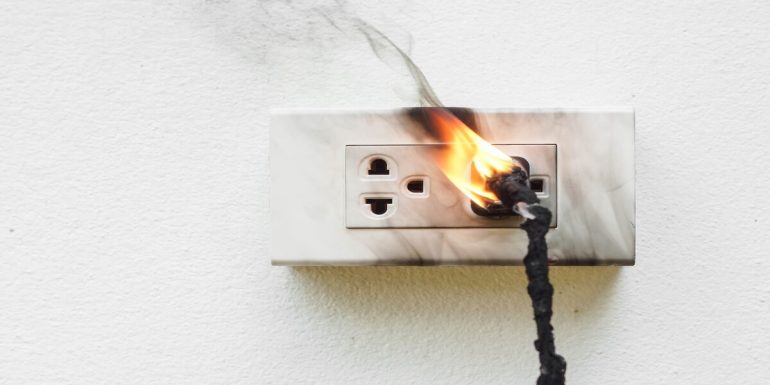Electrical issues can be terrifying. They not only damage equipment but also pose a threat to life and property. There are numerous issues that can occur when dealing with electricity.
For example, if you live in Columbia, Missouri, issues such as high energy bills and flickering lights can indicate an electrical problem. But there are solutions as well. So, let us cover 12 common electrical problems and solutions.
But before we start, there is something very important to remember. Electricity is very dangerous and should not be tampered with unless you have prior expertise or understanding. In this kind of situation, you can contact a professional electrical expert to fix the problem.
We spoke to a representative from 2nd city gas plumbing and heating who are local plumbers in Redditch and they said, “Nobody likes electrical problems because they are a huge threat.
However, electrical problems can happen anywhere where there’s electricity. You can handle minor problems that pose no threat on your own, but for the rest, we advise you to leave it to the experts.
Again, when considering household electrical issues, your safety should be your priority. Flickering lights, high bills, and damaged appliances in your home are a sign that the home circuit is not functioning properly and you will need an expert to take a look at the problem.”
12 Common Electrical Problems and Solutions

1. Improper Circuit Protection (No RCCB)
A Residual Current Circuit Breaker (RCCB) is a device that detects and prevents low voltage from occurring in a circuit due to a current leak.
When the circuit contains residual current, it disconnects the loads by turning off the switch from the main supply.
Without one, you don’t have proper circuit protection possibly leading to indirect or direct currents, electrical fires, and electrical shocks.
Solution: Install an RCCB to guard against circuit issues.
Grounding Issues

2. No GFCI
If there is an electrical imbalance between incoming and outgoing currents, a GFCI (ground-fault circuit interrupter) can ‘interrupt’ the circuit. Without a GFCI, electrical wires can overheat leading to burns, shocks, or even an electrical fire.
Solution: The easiest solution is to install a GFCI if you do not already have one.
3. Ungrounded Connections
Electrical grounding is a fail-safe system that provides an alternate route for electricity to flow into when a wiring system fails. It creates a physical connection between the ground and your home’s electrical equipment and appliances.
Solution: To avoid this type of occurrence, make sure that all electrical connections in your house are grounded with a proper grounding system set up.
Lighting Problems

4. Frequent Lighting Issues
If your light bulbs are often blowing, this could indicate an electrical issue.
Bulbs can burn out because of the following conditions:
- wattage is too high
- insufficient air circulation
- voltage is too high
- the bulb connected too firmly, or
- improper wiring on the mains or circuit
Solution: If you often have this issue, check if the holder is loose. A professional can quickly determine the source of electrical burnout.
5. Flickering Lights

If you observe that your lights are flickering or one is dimmer or brighter than the others, there are two possible explanations. They either use electricity at a different wattage or the primary power source is having technical difficulties.
Solution: There is no danger if the lights have different wattages. If the difference in brightness affects you enough, simply change the odd one out for a light of the same wattage. However, if there is a problem with the power panel, you should contact a professional to check out the issue.
6. Electrical Shocks
In some cases, you can feel electrical shocks when you try to turn on or off a switch. Even if the shocks are minor, they indicate that the appliance or switch has an electrical problem or that the wiring is faulty.
Solution: Try connecting another device and see if the issue persists. If the results are the same, contact an electrician immediately to resolve the issue before anybody gets an injury.
7. High Electricity Bills
Wiring damage, circuitry damage, electrical system leakage, or electrical gadgets are becoming obsolete and increasing energy unnecessarily. These are the primary culprits for high electricity bills.
Solution: You can reduce the cost of your electricity bills by converting to more energy-efficient alternatives and unplugging or switching off appliances when they are not in use. Repairing broken or damaged cables and identifying possible sources of power surges can also reduce electricity bills.
8. Frequent Electrical Surges

Power surges are most frequently occur due to faulty electrical wirings in the home, malfunctioning appliances, broken power lines, or lightning strikes.
Electrical surges are a common type of electrical issue that lasts for just a fraction of a second. However, frequent surges can damage equipment and reduce its life expectancy.
Solution: Inspect the device’s electrical connections to the home grid. Disconnect any faulty power supplies or devices from the outlet. If the surges continue, you must contact an electrician.
9. Sags and Dips
Sags and dips occur when electrical equipment connects to a defective or low-quality power grid. When devices linked to inefficient or defective electrical grids are turned on, they use more power than the equipment can handle. As a result, sags, and dips occur.
Solution: If you want to improve your lighting and reduce your energy usage, get your power checked and then repair your old equipment or replace it with a new one.
10. Overloading
The light fixture or other fittings you are using for your high-wattage bulbs may be made for low voltage.
But remember this violates the building code because the excessive heat from the bulb increases the likelihood of melting the socket and sometimes even wire insulation of the fixture.
This can result in electrical fires. A similar event happened in Columbia earlier this year. Thankfully no one was injured, according to the Columbia Fire Department.
Solution: Connect the appropriate bulb to the appropriate fixture. If you are uncertain of the wattage capacity of the fixture, it is recommended to use a 60-watt or lower bulb.
11. Uncovered Junction Box

Junction boxes contain many wires linked to one another and are intended to keep a section of wires separate from one another. These covers also protect the cables from damage. If the junction box does not have a cover, the risk of electrocution increases.
Solution: Call a professional to cover your junction box.
12. Overloaded Circuit Panel
Your electrical panel is configured for a specific number of circuit breakers. These breakers perfectly fit into the slots. Although a tandem breaker resembles two switches, it does not need two slots.
So, when tandem breakers are installed in a single slot instead of two, the panel is over-circuited. An overloaded circuit breaker panel poses a fire threat and can cause severe harm.
Solution: A professional electrician from Bates Electiccan improve the panel’s load capacity or install a sub-panel.
While inspecting your circuits and other components, you might be able to identify and resolve the issue by yourself. But, if you are uncertain about the issue, do not attempt to fix it.
Keep in mind that safety comes first. If the electrical problems and solutions are not in your fixing range. Contact a professional from Bates Electric who is skilled in identifying and resolving electrical issues.
If you found any of the electrical problems and solutions suggested in this post helpful, feel free to share your experience in the comment section.




